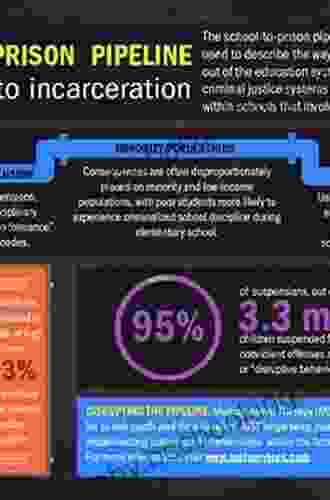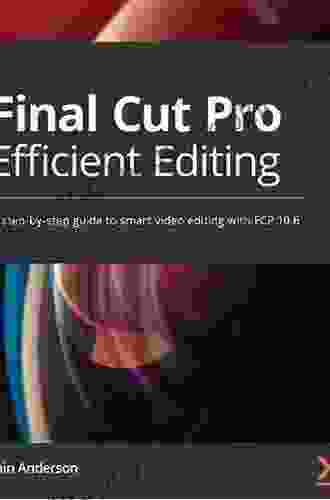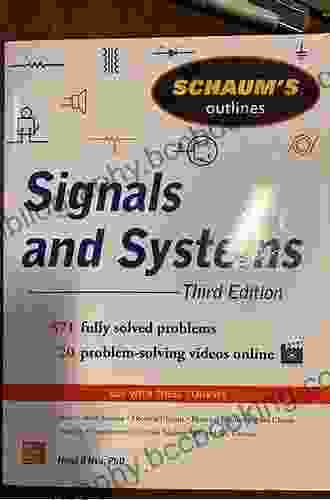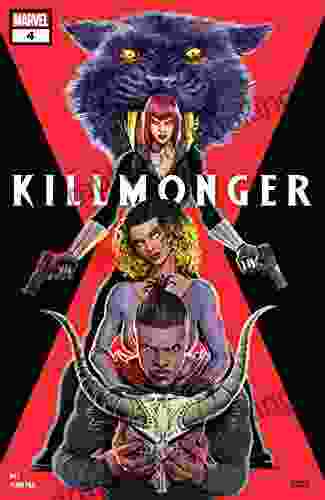Literacy Justice and the School-to-Prison Pipeline: The Teaching for Social Change Movement


4.8 out of 5
| Language | : | English |
| File size | : | 2527 KB |
| Text-to-Speech | : | Enabled |
| Screen Reader | : | Supported |
| Enhanced typesetting | : | Enabled |
| Word Wise | : | Enabled |
| Print length | : | 192 pages |
The school-to-prison pipeline is a disturbing trend in the United States that sees students pushed out of school and into the juvenile justice system. This pipeline is fueled by a number of factors, including poverty, racism, and a lack of access to quality education. Literacy justice is a critical component of addressing the school-to-prison pipeline and promoting social change.
Literacy justice means ensuring that all students have the opportunity to develop the literacy skills they need to succeed in school and in life. This includes access to high-quality literacy instruction, culturally relevant materials, and supportive learning environments. Literacy justice also means challenging the systemic barriers that prevent students from reaching their full potential, such as poverty, racism, and discrimination.
The Teaching for Social Change movement is a powerful force for literacy justice. This movement is based on the belief that education should be used to empower students to become agents of social change. Teaching for Social Change teachers use culturally relevant pedagogy, critical literacy, and restorative justice practices to create equitable and just learning environments for all students.
Culturally Relevant Pedagogy
Culturally relevant pedagogy is a teaching approach that builds on students' cultural knowledge, experiences, and strengths. This approach helps students to see themselves and their culture reflected in the curriculum, which can lead to increased engagement and achievement. For example, a Teaching for Social Change teacher might use a text about the civil rights movement to teach students about the importance of social justice. By connecting the text to students' own lives and experiences, the teacher can make the learning more meaningful and relevant.
Critical Literacy
Critical literacy is a teaching approach that helps students to develop the skills they need to critically analyze texts and media. This approach teaches students to identify the biases and assumptions behind texts, and to question the messages that they are being sent. For example, a Teaching for Social Change teacher might use a critical literacy lesson to help students to deconstruct a news article about the school-to-prison pipeline. By analyzing the article, students can learn about the different perspectives on the issue, and they can develop their own informed opinions.
Restorative Justice Practices
Restorative justice practices are a set of practices that are designed to build relationships and heal harm. These practices can be used to address conflict and misbehavior in schools, and they can help to create a more positive and supportive learning environment. For example, a Teaching for Social Change teacher might use a restorative justice practice called a peace circle to help students to resolve conflicts. By talking about their feelings and listening to each other, students can learn to resolve conflicts peacefully and respectfully.
The Teaching for Social Change movement is making a real difference in the lives of students. This movement is helping to create more equitable and just schools, and it is empowering students to become agents of social change. Literacy justice is a critical component of the Teaching for Social Change movement, and it is essential for addressing the school-to-prison pipeline and promoting social change.
Personal Narratives
The following personal narratives from students and teachers involved in the Teaching for Social Change movement illustrate the transformative power of literacy justice:
Student: "Before I came to this school, I was struggling in school and I didn't really care about learning. But this school has changed my life. The teachers here care about me and they want me to succeed. They use culturally relevant materials that I can relate to, and they teach me about the importance of social justice. I'm now a confident and engaged learner, and I know that I can make a difference in the world."
Teacher: "I've been teaching for over 20 years, and I've never seen a program that has had such a positive impact on students. The Teaching for Social Change movement is giving students the tools they need to succeed in school and in life. These students are becoming critical thinkers, problem solvers, and agents of change. I'm so proud to be a part of this movement."
Research Findings
Research has shown that the Teaching for Social Change movement is effective in improving student outcomes. A study by the University of California, Los Angeles found that students in Teaching for Social Change schools had higher attendance rates, better grades, and were more likely to graduate from high school. The study also found that these students were more likely to be involved in extracurricular activities and community service, and they had higher levels of civic engagement.
Another study, by the University of Michigan, found that students in Teaching for Social Change schools were more likely to develop critical literacy skills. These students were able to identify the biases and assumptions behind texts, and they were able to question the messages that they were being sent. The study also found that these students were more likely to be engaged in social action.
The Teaching for Social Change movement is a powerful force for good in the world. This movement is helping to create more equitable and just schools, and it is empowering students to become agents of social change. Literacy justice is a critical component of this movement, and it is essential for addressing the school-to-prison pipeline and promoting social change.
Call to Action
If you are interested in getting involved in the Teaching for Social Change movement, there are a number of ways to do so. You can:
- Donate to organizations that support the movement.
- Volunteer your time at a Teaching for Social Change school.
- Become a Teaching for Social Change teacher.
- Spread the word about the movement on social media.
Together, we can create a more just and equitable world for all students.
4.8 out of 5
| Language | : | English |
| File size | : | 2527 KB |
| Text-to-Speech | : | Enabled |
| Screen Reader | : | Supported |
| Enhanced typesetting | : | Enabled |
| Word Wise | : | Enabled |
| Print length | : | 192 pages |
Do you want to contribute by writing guest posts on this blog?
Please contact us and send us a resume of previous articles that you have written.
 Book
Book Novel
Novel Page
Page Chapter
Chapter Text
Text Story
Story Genre
Genre Reader
Reader Library
Library Paperback
Paperback E-book
E-book Magazine
Magazine Newspaper
Newspaper Paragraph
Paragraph Sentence
Sentence Bookmark
Bookmark Shelf
Shelf Glossary
Glossary Bibliography
Bibliography Foreword
Foreword Preface
Preface Synopsis
Synopsis Annotation
Annotation Footnote
Footnote Manuscript
Manuscript Scroll
Scroll Codex
Codex Tome
Tome Bestseller
Bestseller Classics
Classics Library card
Library card Narrative
Narrative Biography
Biography Autobiography
Autobiography Memoir
Memoir Reference
Reference Encyclopedia
Encyclopedia Paul Davidson
Paul Davidson Hunter Biden
Hunter Biden Illustrated Edition Kindle Edition
Illustrated Edition Kindle Edition J F Tamayo
J F Tamayo John Brown
John Brown Jack David Eller
Jack David Eller Jean Lamarre
Jean Lamarre Jared Chapman
Jared Chapman Viviana Altuve
Viviana Altuve Jonathan Alter
Jonathan Alter J C Allen
J C Allen Pat Mullaly
Pat Mullaly Ted Sandling
Ted Sandling Idtravelling
Idtravelling Mark Bertolini
Mark Bertolini Nina Riggs
Nina Riggs Liz Bucheit
Liz Bucheit Jonathan Maberry
Jonathan Maberry Tucker Joneson
Tucker Joneson Malcolm Macpherson
Malcolm Macpherson
Light bulbAdvertise smarter! Our strategic ad space ensures maximum exposure. Reserve your spot today!

 Rodney ParkerSink Your Teeth into Sweet Delights: The Buttercream Collection of the Best...
Rodney ParkerSink Your Teeth into Sweet Delights: The Buttercream Collection of the Best...
 Fernando PessoaEmbark on a Profound Journey with One Man's Unwavering Spirit: "One Man's...
Fernando PessoaEmbark on a Profound Journey with One Man's Unwavering Spirit: "One Man's... Jeffrey HayesFollow ·8k
Jeffrey HayesFollow ·8k Earl WilliamsFollow ·19.5k
Earl WilliamsFollow ·19.5k Daniel KnightFollow ·14k
Daniel KnightFollow ·14k Gerald ParkerFollow ·3.6k
Gerald ParkerFollow ·3.6k Hamilton BellFollow ·16.5k
Hamilton BellFollow ·16.5k Blake BellFollow ·15.2k
Blake BellFollow ·15.2k Marcus BellFollow ·4.7k
Marcus BellFollow ·4.7k Adam HayesFollow ·12.3k
Adam HayesFollow ·12.3k

 Luke Blair
Luke Blair101 Amazing Facts About Australia: A Journey Through the...
A Literary Expedition Unveiling the Treasures...
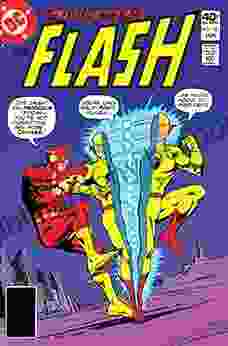
 Harry Hayes
Harry HayesWitness the Velocity and Legacy of the Scarlet Speedster:...
Delve into the Lightning-Charged...

 Stan Ward
Stan Ward101 Amazing Facts About Ancient Egypt: Unraveling the...
: A Timeless Realm of Wonder Ancient Egypt, a...

 Stephen King
Stephen KingEscape into Adventure: Unveil the Secrets of Adventure...
In the annals of comic book history,...

 Forrest Blair
Forrest BlairThe Oxford Dog Training Company Presents: A Holistic...
In the realm of dog...
4.8 out of 5
| Language | : | English |
| File size | : | 2527 KB |
| Text-to-Speech | : | Enabled |
| Screen Reader | : | Supported |
| Enhanced typesetting | : | Enabled |
| Word Wise | : | Enabled |
| Print length | : | 192 pages |


